
Learn about sea turtles
For more than 100 million years sea turtles have covered vast distances across the world’s oceans, filling a vital role in the balance of marine habitats. Sea turtles spend most of their lives in the ocean and only come ashore to bask or nest. Baby sea turtles face a number of obstacles to make it back to sea after hatching; some experts say only one out of a thousand will survive to adulthood under natural conditions.
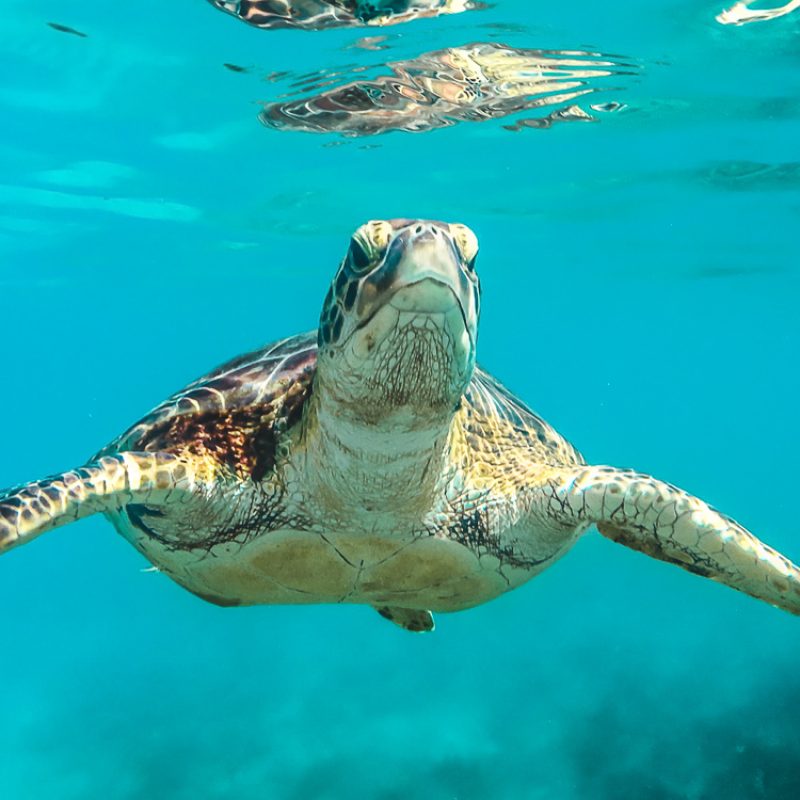
Sea Turtle Lifecycle

Eggs
Egg incubation time varies with species, nest size, and temperature and humidity in the nest. but is approximately 45 to 60 days.

Hatching
After hatching, the young turtles may take 3 to 7 days to dig their way to the surface. Hatchlings usually wait until night to emerge from the nest.

Juvenile
Hatchlings use light intensities and an internal magnetic compass to navigation their way to the ocean and swim to deeper waters.

Adult
After about 20-50 years sea turtles mature in the open ocean and migrate back to their original birthplace to lay eggs.
Local Species
Worldwide, six of the seven sea turtle species are classified as threatened or endangered due to human actions and lifestyles. Four of the world’s six endangered or critically endangered species of marine turtles surf the Pacific coast: the hawksbill, green, and loggerhead turtle.
Playa Venao is primarily a home to the Olive Ridley sea turtle species.
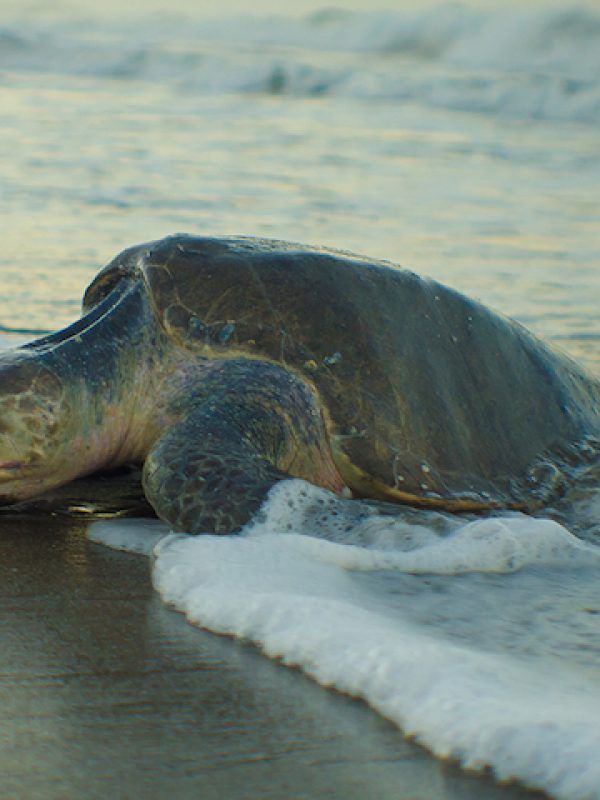
Olive Ridley Turtles
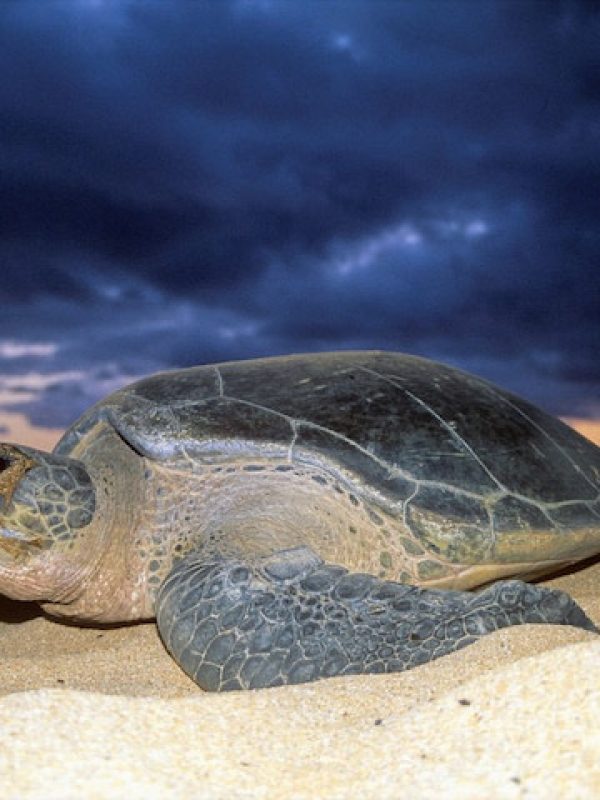
Green Turtles
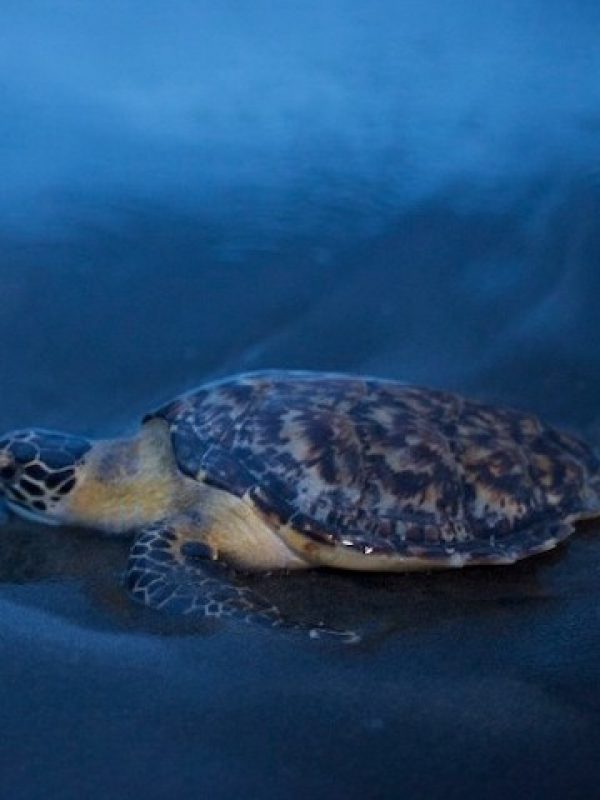
Hawksbill Turtles
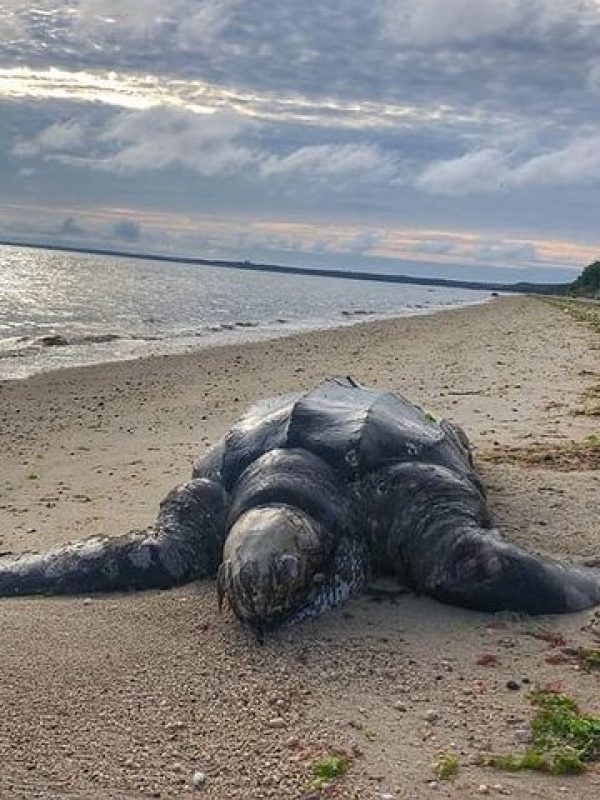
Leatherback Turtles
Tortugas Playa Venao is working together with local and international partners towards sea turtle conservation. The substantial new development that has taken place in the area, particularly along the beach, presents one of the main threats by habitat destruction for sea turtles. Learn more about the natural and man-made threats to the sea turtles.
Get Involved
Help protect the sea turtles
Explore seasonal and year-round activities
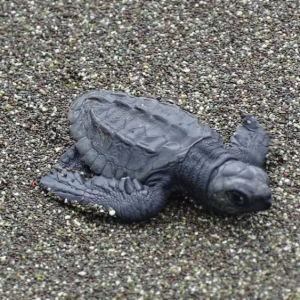
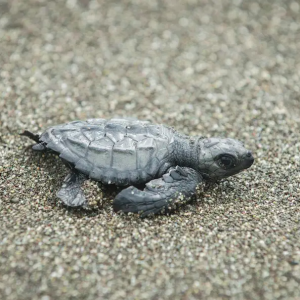
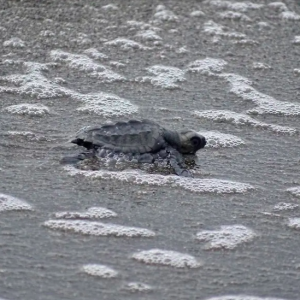
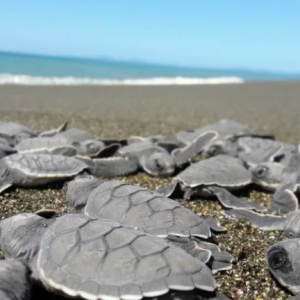
Sea Turtle FAQs
For our beach, July through end of October each year. Hatchlings emerge 50-60 days later. But there is always plenty to do! We run educational events and beach clean-ups year-round. During the winter months, we will also prepare equipment and run training sessions for the next season.
The nesting process consists of several stages. The female turtle emerges from the sea at night and climbs the beach, looking for a suitable area to nest (somewhere dark and quiet). Once he is in the chosen place, he begins to clean the area with the four fins. Scoop out all the surface sand around it, which it will use later to cover the nest. Once the area is clean, it begins to dig a hole, the chamber where it will lay the eggs, through its rear fins, alternating left and right. When it cannot go any deeper, it stops and begins contractions, with the rear fins covering part of the nest. There it will begin to lay its eggs. Following each contraction, the female turtle will release between 1 and 4 eggs at a time. The eggs will practically fill the entire cavity. Once egg laying is complete, it will cover the nest using its hind flippers in a similar way to how it had dug it, but in reverse. You will put sand on top of the eggs, until they are completely covered. It will compact the excess sand at the top of the nest, using the bottom of its shell (plastron). That is where the camouflage process will begin. Moving slowly forward, the turtle will begin to toss dry, shallow sand backward. This effort will serve to camouflage the nest from possible predators. Once finished, it will go to the bottom of the beach, returning again to the sea It will compact the excess sand at the top of the nest, using the bottom of its shell (plastron). That is where the camouflage process will begin. Moving slowly forward, the turtle will begin to toss dry, shallow sand backward. This effort will serve to camouflage the nest from possible predators. Once finished, it will go to the bottom of the beach, returning again to the sea It will compact the excess sand at the top of the nest, using the bottom of its shell (plastron). That is where the camouflage process will begin. Moving slowly forward, the turtle will begin to toss dry, shallow sand backward. This effort will serve to camouflage the nest from possible predators. Once finished, it will go to the bottom of the beach, returning again to the sea.
The latest theory about how turtles navigate is that they can detect both the angle and the intensity of the earth’s magnetic field. Using these two characteristics, a turtle can be able to determine its latitude and longitude, enabling it to navigate virtually anywhere. Early experiments seem to prove that sea turtles have the ability to detect magnetic fields. Whether they use said ability is being investigated.
It is widely known that hatchlings imprint the unique qualities of their natal beach while still in the nest and / or during their first voyage from the nest to the sea. The beach characteristics they use appear to include odor, low-frequency sounds, magnetic fields, characteristics of near shore currents, and signs from the sky.
Each morning during turtle season, before the visitors arrive, we patrol the beach looking for the tracks of any momma turtles who laid their nests during the night. With our trained eyes we follow the distinctive tracks to find the tell-tale signs of the nest. Just like snowflakes, no two nests look exactly the same, which makes the data gathering all that much more fun!
When we spot a nest, we mark it with stakes and tape to protect it from the beach traffic like the police, beach raker, garbage trucks, and visitors who might inadvertently damage a nest. This also helps us to find it easily and keep an eye on it to ensure it is left undisturbed by humans. Some nests require more protection for the hatchlings and these have cages or nets.
If you encounter a nesting female, immediately call us or the police who will contact us. You should stay a good distance (20 feet) behind her and outside of her sight line. Never use flash photography or attempt to touch her.
On average, sea turtles nests average 115 eggs (± 20%) with one female laying 3-6 nests in a season. An adult female (beginning at age 25-30 years) will only nest every 2-3 years. Once she lays the eggs, the momma re-enters the sea and does not return to the nest. The eggs incubate under the sand and hatch in 50-60 days. Warm sands (> 86⁰ F or 30⁰ C) produce mostly female turtles and cooler sands result in mainly males.
Only about one in 1,000 turtles survive to adulthood. It is estimated about half of turtle eggs hatch. Hatchlings first challenge once outside of the nest is to make it to the sea; they die of dehydration if they don’t make it to the ocean fast enough. Birds, crabs, and other animals also prey on the young turtles. Once in the ocean, they are predated upon by fish, and sharks as they grow older. Fishing, crab traps and boat strikes are other dangers. As they grow larger and mature into adults their chances of survival increase.
They are shaped and sized like ping-pong balls with a soft shell. Usually the eggs have a spherical shape, although occasionally we find some deformed. Some turtles lay small infertile eggs, or vain eggs, that contain only egg albumin (the white). The leatherback turtle lays several at each clutch, but for other species it is rare.
No. Once the nest is completed, the female will never return. The eggs and hatchlings that hatch will have to fend for themselves and must locate where the water is when they emerge.
The temperature of a nest determines the sex of the hatchlings. This is called temperature-dependent sex determination (TSD). Warmer temperatures produce more females, and cooler temperatures produce a majority of males. There is a pivotal temperature that produces a balanced ratio between males and females. The temperature that defines the ratio differs between species and the nesting site.
Because hatchlings are small and the egg chambers are deep, it is almost impossible for a single hatchling to leave the nest. As the hatchlings emerge from their shell within the nest, they stimulate other hatchlings to emerge from their eggs as well. Once most hatchlings have emerged from their shells, they climb over the shell debris to propel themselves to the surface of the chamber. Hatchlings near the surface scratch the sand on and around them. They emerge either en masse or in small groups. The fact of emerging together increases the chances of survival against predators, since a single newborn would be an easy prey.
Sea turtles are “phototactic”, which means that they are attracted to light. They are guided by the brightest light, which is usually the brightness of the sea surface. The turtles avoid the shadows, including the vegetation of the dunes at the top of the beach; places where danger might hide.
For the eggs to survive and have a chance to hatch, the turtles must lay them on sandy beaches. As they develop, the embryos breathe air through a membrane in the eggs, and could not survive if they were continuously covered in water. If disturbed, the turtles may decide not to nest. They will usually return to the sea and try to nest again that night or after a couple of days. Once the laying of eggs is ready to be laid, the female will lay them to allow the development of the next clutch. Although it is rare, some turtles when disturbed can release them into the sea if they cannot hold the eggs any longer. Some captive turtles are known to have released eggs into the water.
Each species eats a specific diet for it. For example, big heads with their strong jaws are capable of crushing organisms with a hard shell, such as crustacean lobsters and fish. Green ones, with their serrated mouths, prefer seagrasses, while leatherbacks mainly eat jellyfish. Hawksbills have a beak-shaped jaw that they use to feed through tough corals, either sponges and anemones. No species has teeth. Leatherback turtles have 2 prominent endings on the upper part of the jaw, which are distinguished from other species.
Leatherbacks can dive to depths of more than 1,000 meters (3,000 feet) in search of their prey, jellyfish. Hard-shelled species swim in shallower waters. The morphology of the leatherback turtle is adapted to deep waters. Unlike other sea turtles, it does not have a rigid sternum that allows it to collapse during deep dives. There is a lot of oil on the skin and the leather shell absorbs Nitrogen, reducing problems that arise during decompression during deep dives and ascent to the surface.
Since turtles are air-breathing reptiles, they need to surface to breathe. They can hold their breath for several hours, depending on the level of activity. A turtle that is resting or sleeping underwater can be between 4-7 hours. More recent studies have shown that some turtles can even hibernate in water for several months! However, a stressed turtle, entangled in a fishing net, will quickly use its oxygen and can drown in minutes.
Both are usually active at night and some of our volunteers have yet to see a turtle lay a nest or a nest to boil (hatch). So consider yourself very lucky if you encounter sea turtles. Remember they are threatened and protected; it is illegal to touch, feed, or interfere with them.
Marine turtles live in the water and only come ashore to lay their eggs. They eat, sleep and mate in our oceans – their home. They have daily commuting patterns, tend to sleep anchored to a spot/rock and seasonally migrate long distances from Florida up the Eastern seaboard to Massachusetts and out into the Atlantic Ocean following prey in the Gulf Stream.
